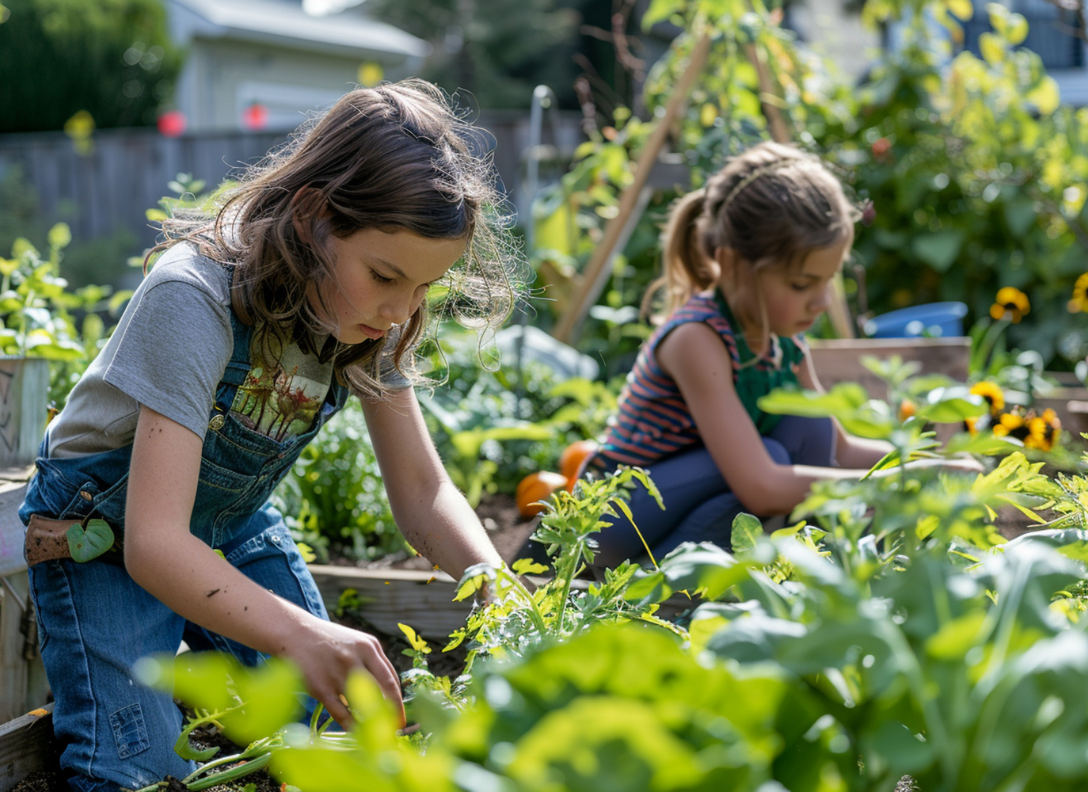Many people believe gardening requires a big backyard, rich soil, and endless sunshine. But what if you live in an apartment, a condo, or a townhouse with no outdoor space? The good news is, you can absolutely garden without a backyard. With the rise of urban gardening, container planting, and indoor hydroponics, people are growing fresh vegetables, herbs, and even fruit in the smallest spaces imaginable from windowsills to rooftops.
The reality is simple: plants don’t care if they’re in the ground or in a pot, as long as they have access to the essentials light, water, nutrients, and air circulation. Whether you’re working with a sunny balcony, a kitchen counter, or even a north-facing apartment window, you can create a productive garden that supplies you with fresh food and greenery year-round.
This guide will walk you through everything you need to know to start a garden without a backyard. We’ll cover container gardening, balcony hacks, vertical systems, indoor grow setups, hydroponics, community plots, and budget-friendly tricks. You’ll also learn which crops thrive in small spaces, how to avoid common mistakes, and how much money you can save by growing your own food.
By the end, you’ll see that space isn’t the limitation many people think it is. Creativity is. And with the right strategies, you can turn even the tiniest home into a thriving garden oasis.
Why You Don’t Need a Backyard to Garden
Backyards are convenient, but they’re not essential. Here’s why:
- Plants are adaptable – Most vegetables and herbs thrive in containers.
- Light matters more than size – A sunny balcony can be more productive than a shaded yard.
- Containers = control – You decide soil type, location, and watering schedule.
- Urban solutions exist – Rooftops, balconies, and window planters are underused spaces.
- Technology has made it easier – LED grow lights and hydroponics mean you don’t even need soil.
Option 1: Container Gardening
Container gardening is the easiest and most flexible way to grow plants without a backyard.
Benefits
- Portable—move plants as the seasons change.
- Works indoors and outdoors.
- Great for beginners—less weeding, easier to manage.
Best Crops for Containers
- Herbs: basil, mint, parsley, thyme, cilantro.
- Leafy greens: lettuce, spinach, kale.
- Root crops: radishes, carrots, beets.
- Fruit/veg: cherry tomatoes, peppers, bush beans, dwarf cucumbers.
Tips for Success
- Choose containers at least 12–18 inches deep.
- Use potting mix (not garden soil) for drainage.
- Water more frequently—containers dry out faster.
- Fertilize every 2–3 weeks with liquid fertilizer.
Option 2: Balcony & Patio Gardening
A balcony is essentially an outdoor room—and with some planning, it can become your mini farm.
Ideas
- Rail planters: perfect for herbs and flowers.
- Vertical racks: grow multiple pots in one footprint.
- Trellises: let cucumbers, peas, or beans climb.
- Rolling containers: follow the sunlight across your balcony.
Even a 3×6 ft balcony can supply salads for a family all summer.
Option 3: Vertical Gardening
When floor space is limited, go vertical.
Types of Vertical Gardens
- Wall planters: modular panels for herbs or small greens.
- Hanging baskets: great for strawberries, cherry tomatoes, or trailing herbs.
- Pocket gardens: fabric planters that hang on walls.
- Trellised plants: beans, cucumbers, and peas thrive when climbing.
Vertical gardens create beauty while saving space.
Option 4: Indoor Gardening
If you lack outdoor access, bring the garden inside.
Windowsill Gardens
- Grow herbs, microgreens, or lettuce.
- South- and east-facing windows are ideal.
Grow Lights
- LED grow lights replicate sunlight.
- Affordable countertop kits exist for apartments.
- Great for year-round lettuce, spinach, or herbs.
Hydroponics
- Soil-free, uses water and nutrients.
- Very efficient—faster growth, less water.
- Crops: lettuce, basil, mint, peppers, compact tomatoes.
Aquaponics (advanced)
- Combines fish tanks with plant growth.
- Fish waste feeds plants; plants clean the water.
- Great eco-friendly option for hobbyists.
Option 5: Rooftop & Community Gardens
If you live in a city, rooftops and shared spaces may be available.
- Rooftop gardens: Often used for urban farming.
- Community gardens: Rent a small plot for a low fee.
- Shared patios: Neighbors often collaborate to grow together.
Microgreens: The Easiest Small-Space Crop
Microgreens are baby versions of vegetables harvested after 10–14 days.
- Grow in shallow trays indoors.
- Ready in under two weeks.
- Up to 40x more nutrients than mature plants.
- Best for: broccoli, radish, kale, mustard, peas.
👉 They’re perfect for gardeners with zero outdoor space.
Mistakes to Avoid in Small-Space Gardening
- Using heavy garden soil in pots → poor drainage.
- Choosing oversized crops like corn or pumpkins.
- Inconsistent watering—containers dry out faster.
- Ignoring sunlight—plants stretch and weaken.
- Overcrowding—each plant needs root space.
Budget-Friendly Hacks
- Repurpose buckets, crates, or even old teapots as planters.
- Use pallet gardens for vertical planting.
- Mason jars for windowsill herbs.
- Shoe organizers as hanging pocket gardens.
Case Studies
- NYC Balcony Farm: 5×8 ft balcony grew lettuce, basil, tomatoes, and strawberries worth $250 in one summer.
- Toronto Hydroponic Kitchen: One countertop unit grew salad greens for a family year-round.
- San Francisco Rooftop: Shared 4×4 ft plot provided weekly produce all season.
Seasonal Planting Calendar (Containers)
- Spring: radishes, lettuce, spinach, peas.
- Summer: tomatoes, cucumbers, zucchini, beans.
- Fall: kale, carrots, lettuce, beets.
- Winter (indoors): herbs, microgreens, spinach under lights.
Beginner Action Plan (First 4 Weeks)
- Week 1: Choose 2 herbs + 1 leafy green. Buy containers & soil.
- Week 2: Plant seeds/seedlings. Place near sun or under grow lights.
- Week 3: Water consistently, rotate plants, start fertilizing lightly.
- Week 4: Harvest microgreens or early lettuce. Track what worked.
FAQs
Q1: Can I really grow vegetables in a small apartment?
Yes. With containers, microgreens, or hydroponics, you can grow fresh food in any apartment. Even a windowsill can support herbs and leafy greens.
Q2: What are the best vegetables for beginners without yards?
Lettuce, spinach, radishes, basil, and cherry tomatoes. They grow fast, don’t require deep soil, and are highly productive.
Q3: How much sunlight do small-space gardens need?
Most vegetables need 6–8 hours per day. If you don’t have enough, supplement with grow lights. Without adequate light, plants become “leggy” and weak.
Q4: Can this actually save money?
Yes. Herbs are the best return: $2 basil plant = $20+ harvests. Lettuce and spinach also provide excellent savings. A small balcony setup can pay for itself in one season.
Q5: How do I keep containers from drying out?
Use self-watering pots, mulch the soil surface, and group pots together to reduce evaporation. Larger pots retain water better than small ones.
Q6: What’s the hardest part of gardening without a backyard?
Watering and light. Containers dry out quickly, and many apartments lack sunlight. The fix: water daily in hot months and use LED grow lights indoors.
Q7: Do I need special tools?
No. Basic supplies: pots, soil, watering can. Extras: trellis for climbing plants, LED lights, pruning scissors.
Q8: What’s the fastest crop for instant success?
Microgreens. Ready in 10–14 days. Lettuce is next—harvest in 30 days.
Gardening isn’t defined by space—it’s defined by creativity. The question “Can I start a garden without a backyard?” has a simple answer: absolutely.
With containers, balconies, vertical setups, hydroponics, and indoor grow lights, anyone can grow fresh food, whether you live in a tiny apartment or a high-rise with no outdoor access. The key is to focus on crops that thrive in small spaces: herbs, greens, radishes, cherry tomatoes, and microgreens.
The benefits go far beyond food. Gardening reduces stress, improves your living environment, and provides a daily connection to nature. It’s empowering to eat something you grew yourself, and even one pot of herbs can change the way you cook and eat.
The mistake most beginners make is waiting until they “have space.” You don’t need it. A mason jar of basil on your kitchen counter is a garden. A single tray of microgreens is a garden. Over time, those small starts can grow into balcony farms, vertical walls, or even hydroponic systems producing year-round food.
👉 Action step: Pick one method from this guide—whether it’s planting herbs in jars, starting microgreens, or setting up a container of lettuce. Commit to caring for it for four weeks. That small step will prove that gardening without a backyard isn’t just possible—it’s practical, rewarding, and transformative.
Your home can be a garden, no matter its size. Start small, stay consistent, and watch your space—and your confidence—grow.




